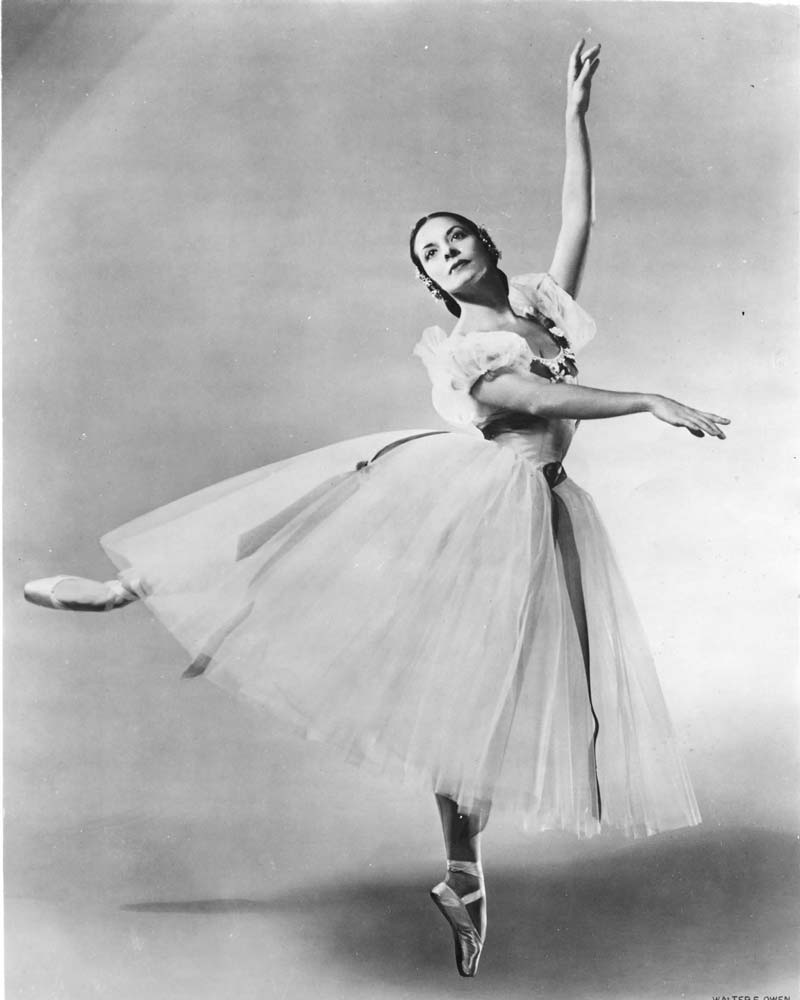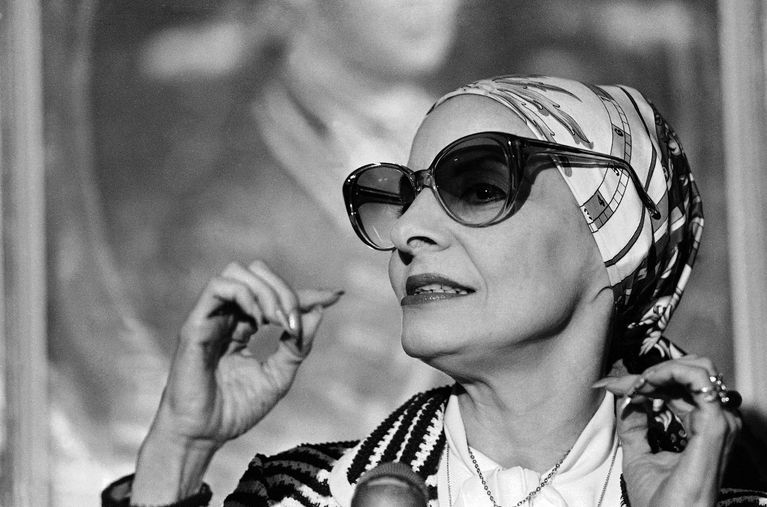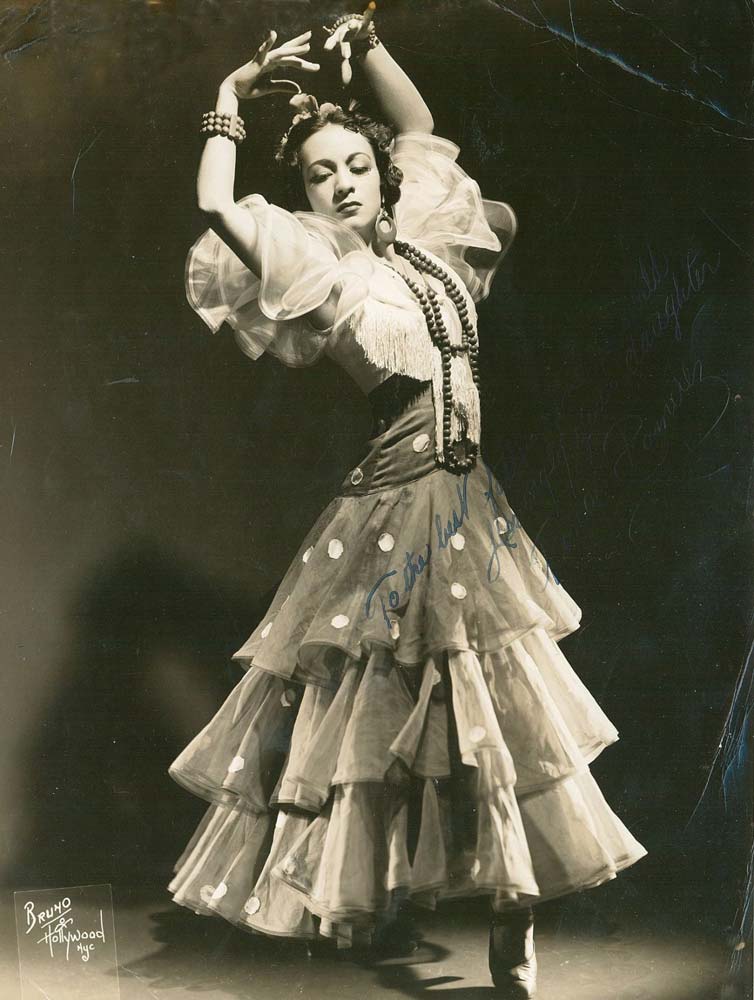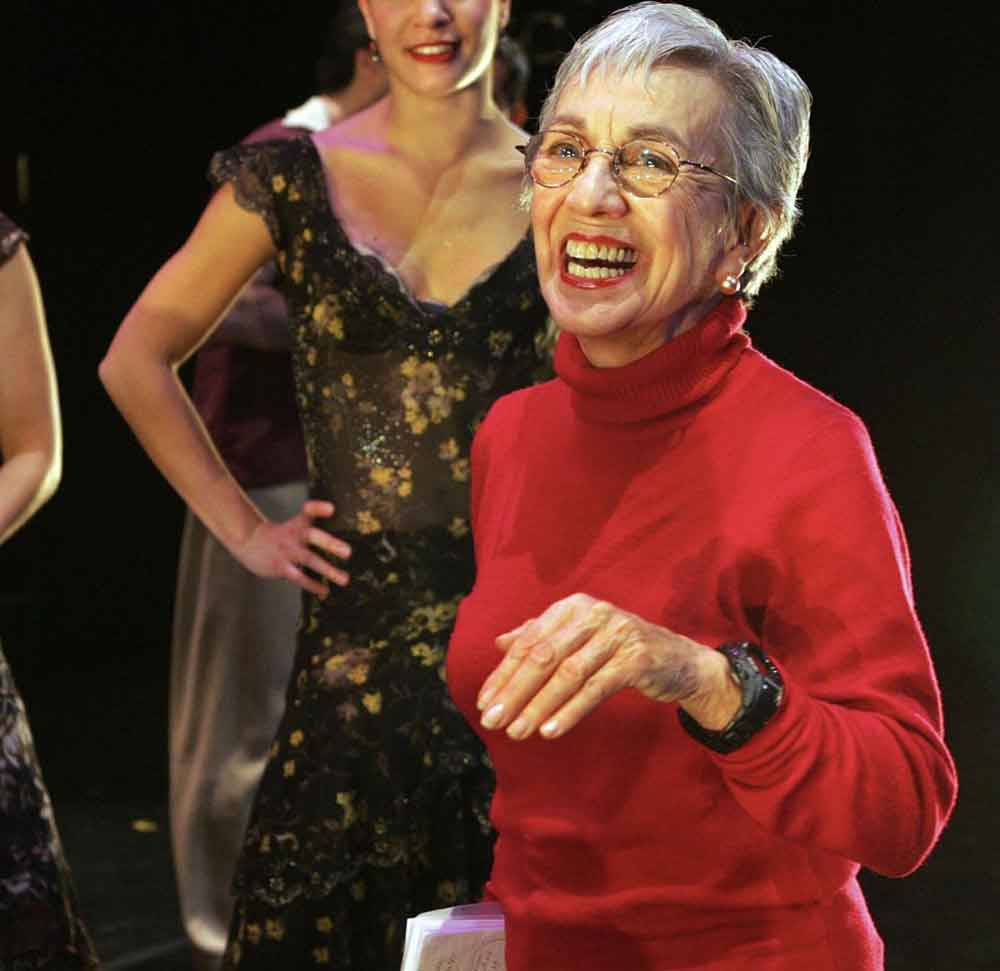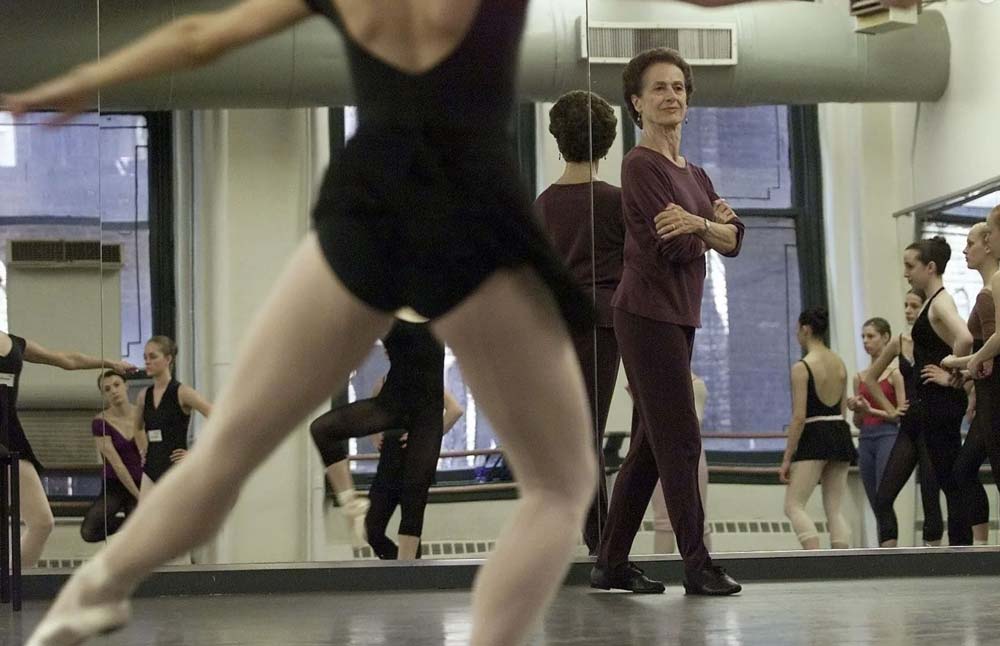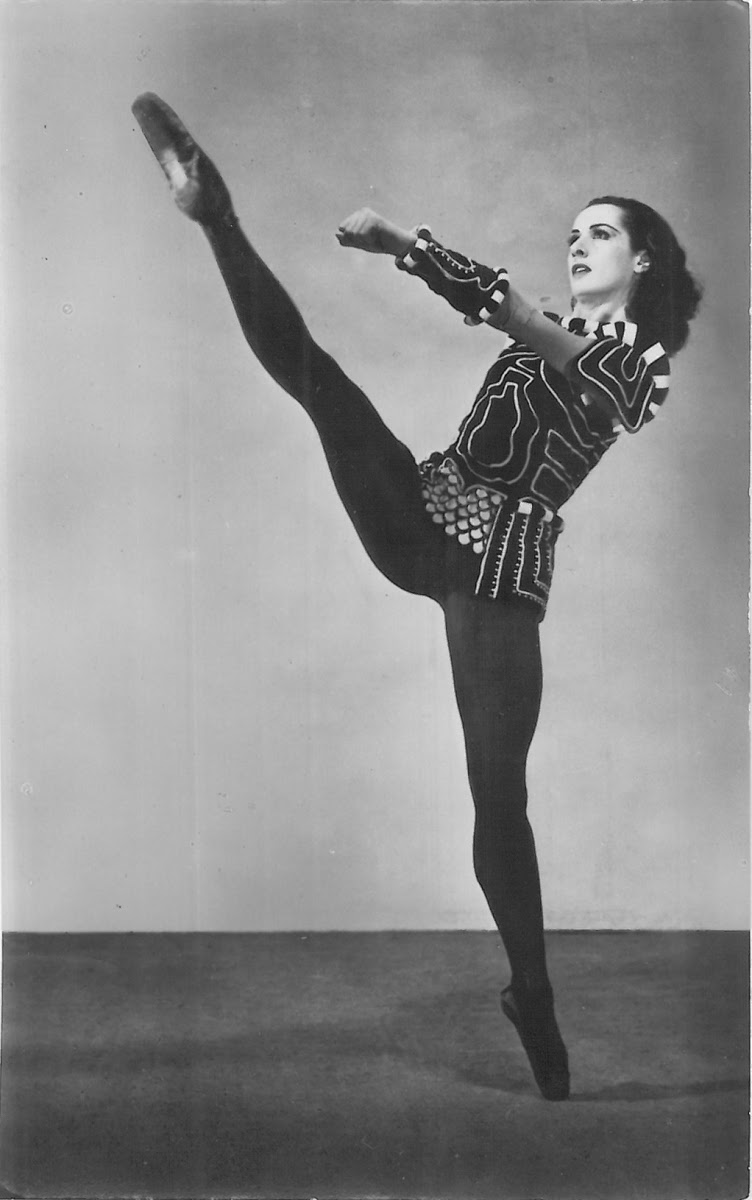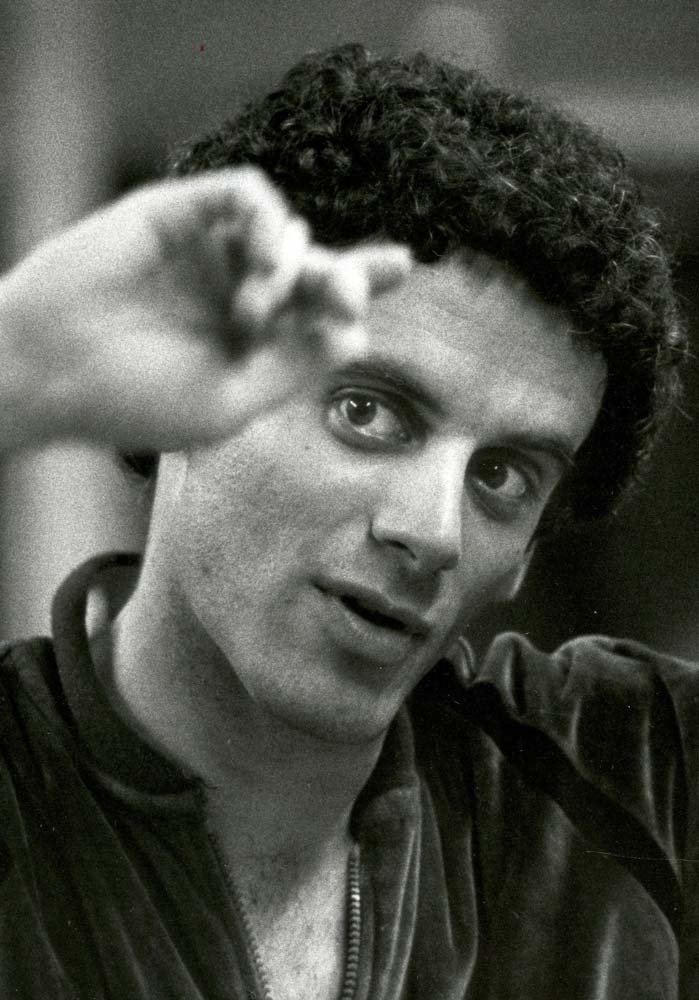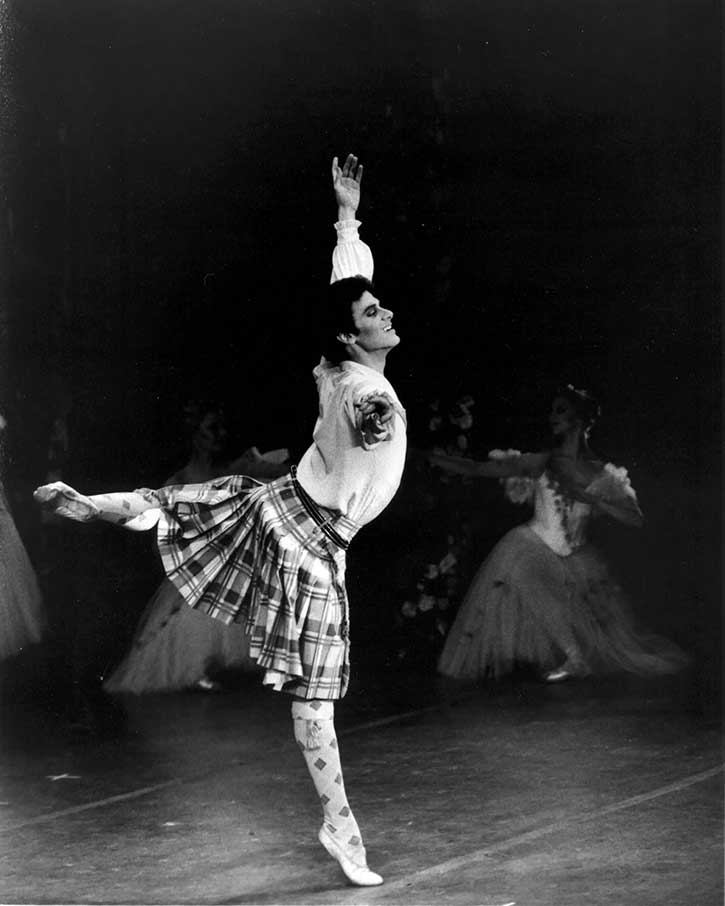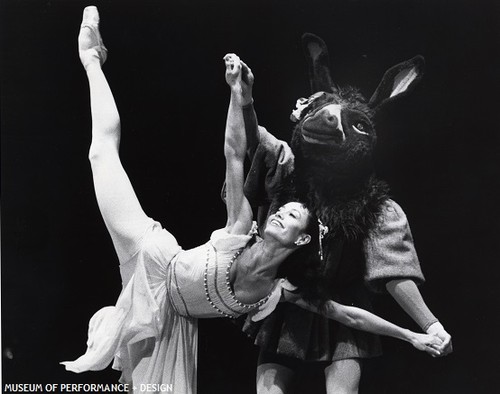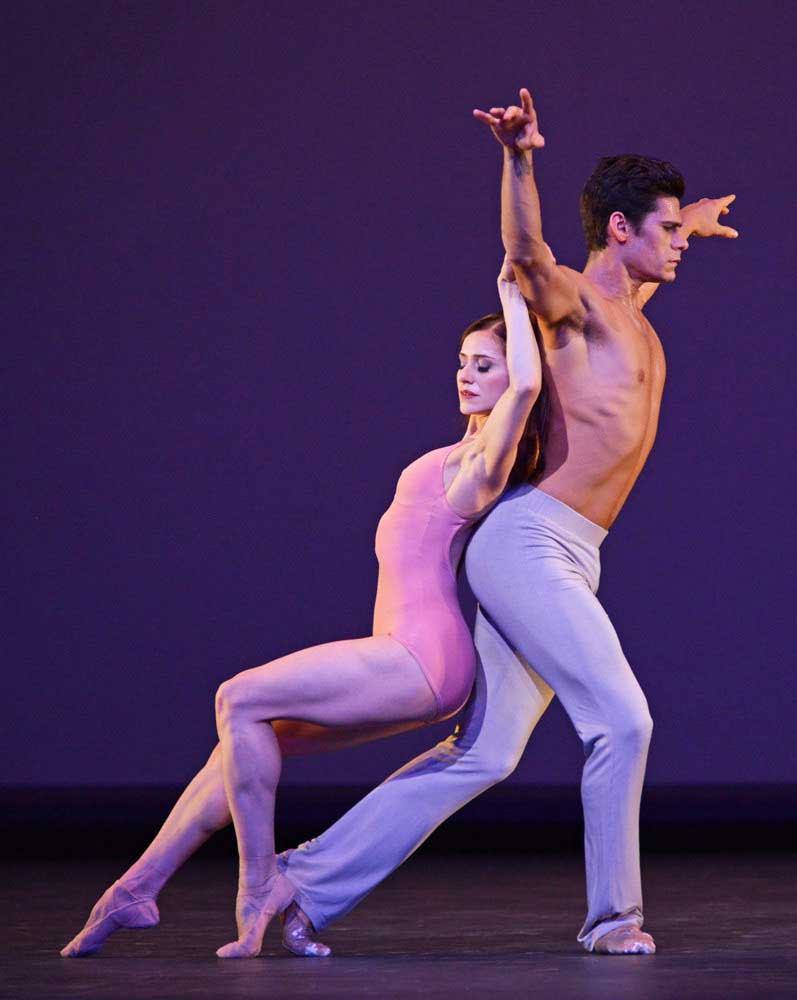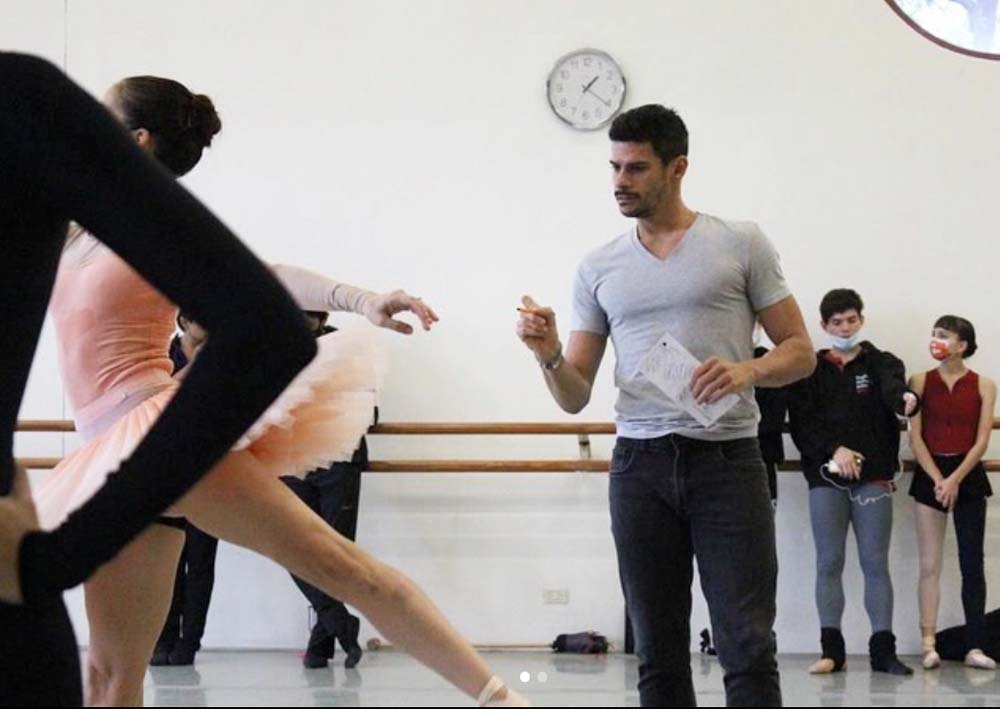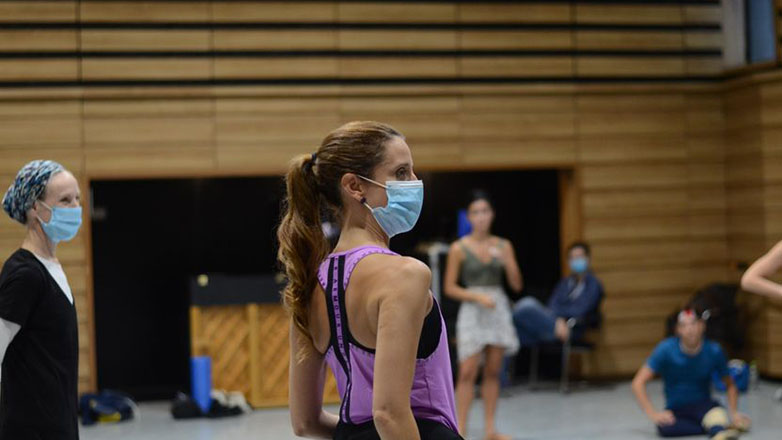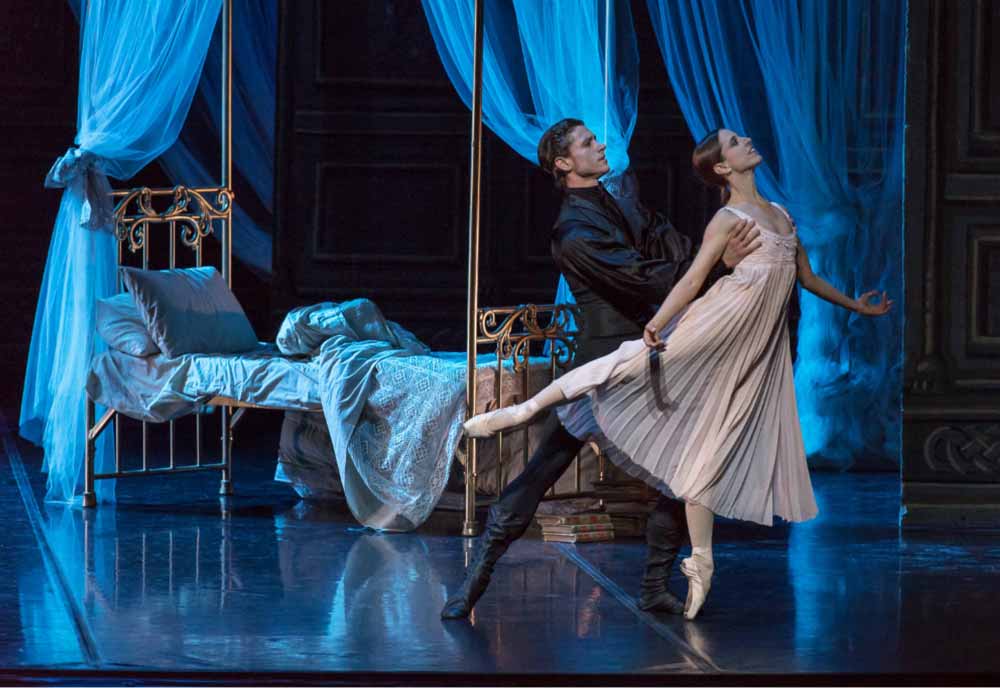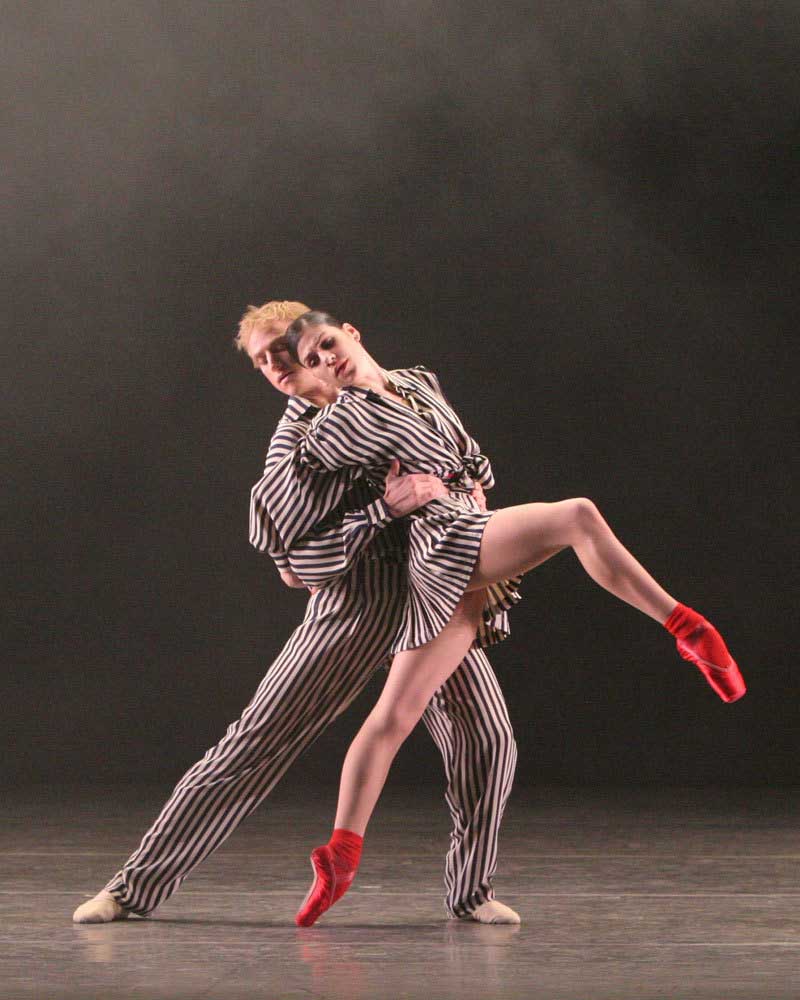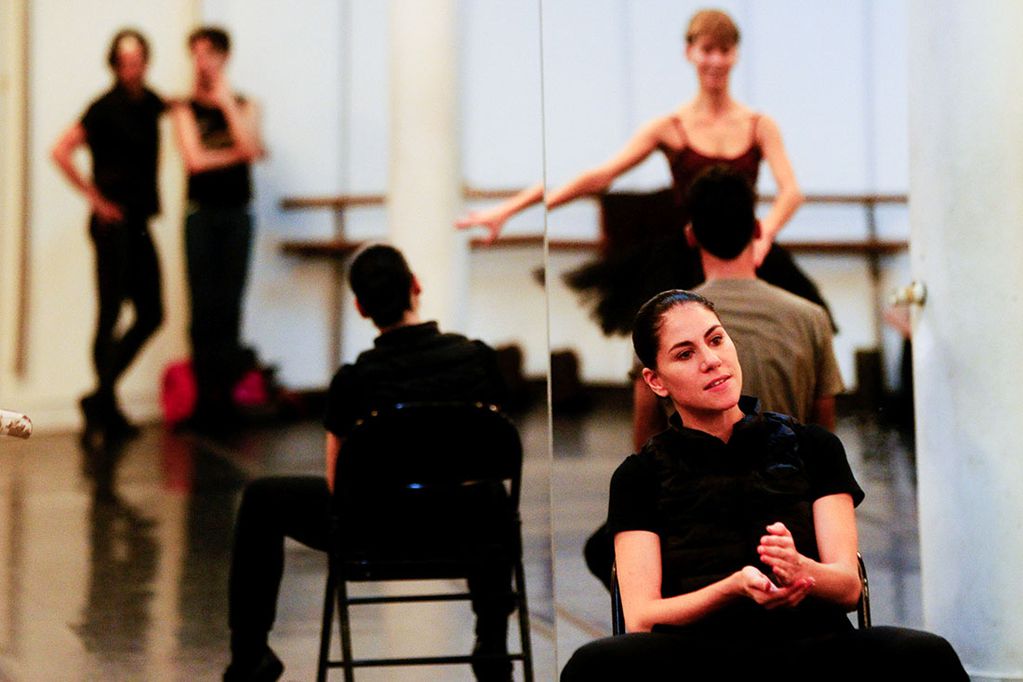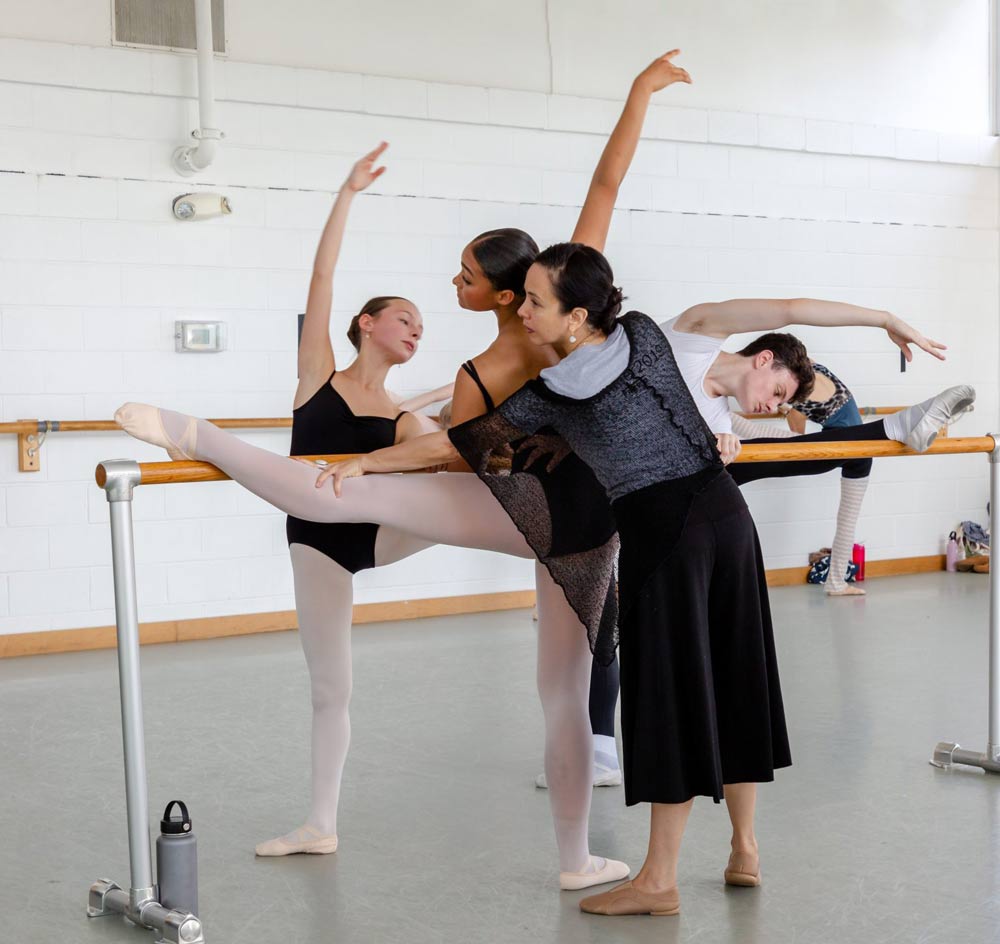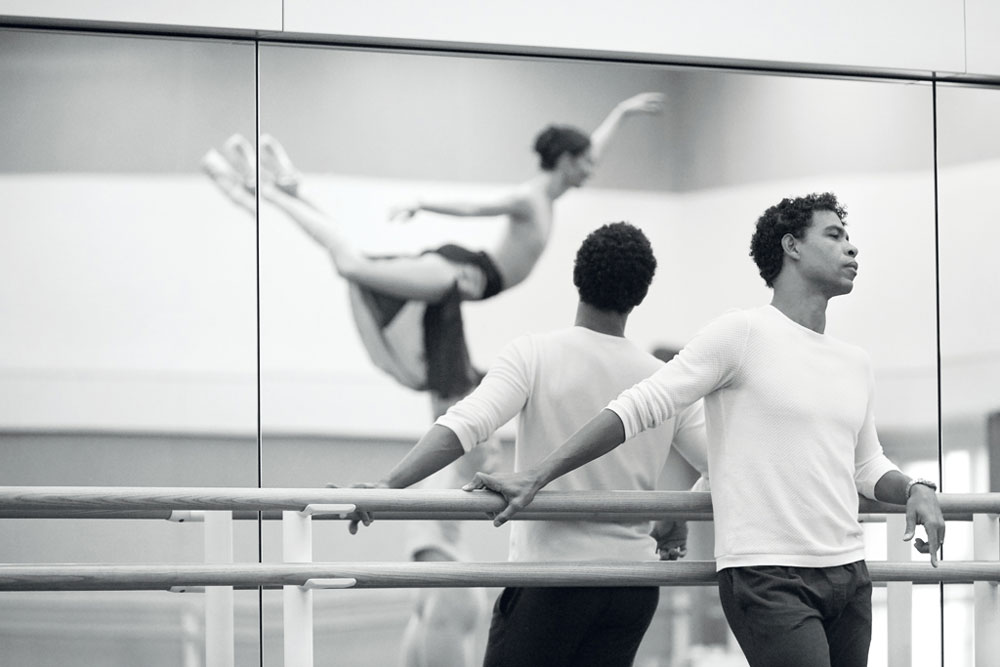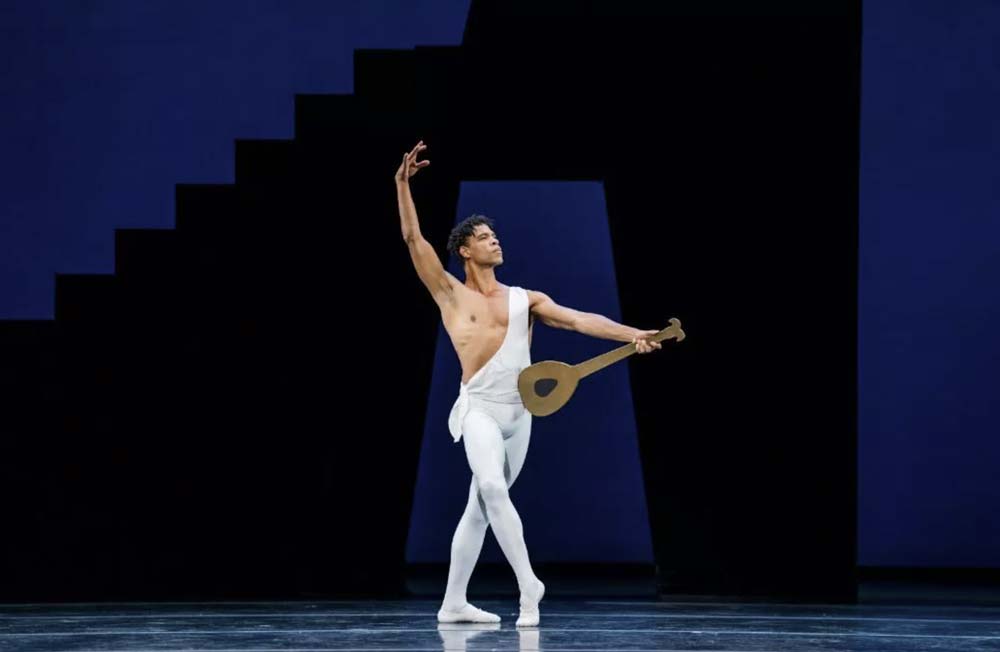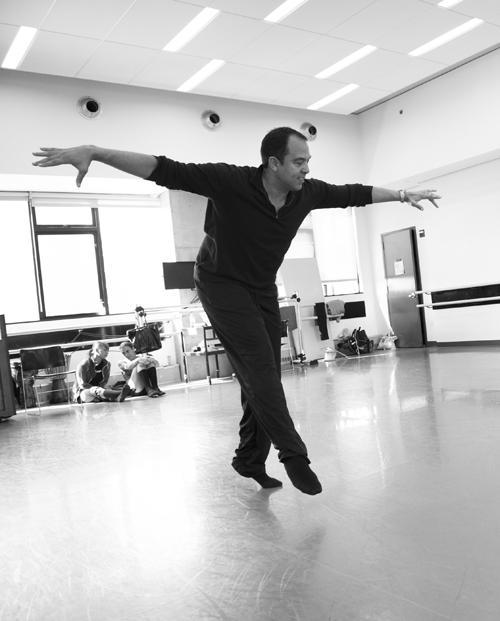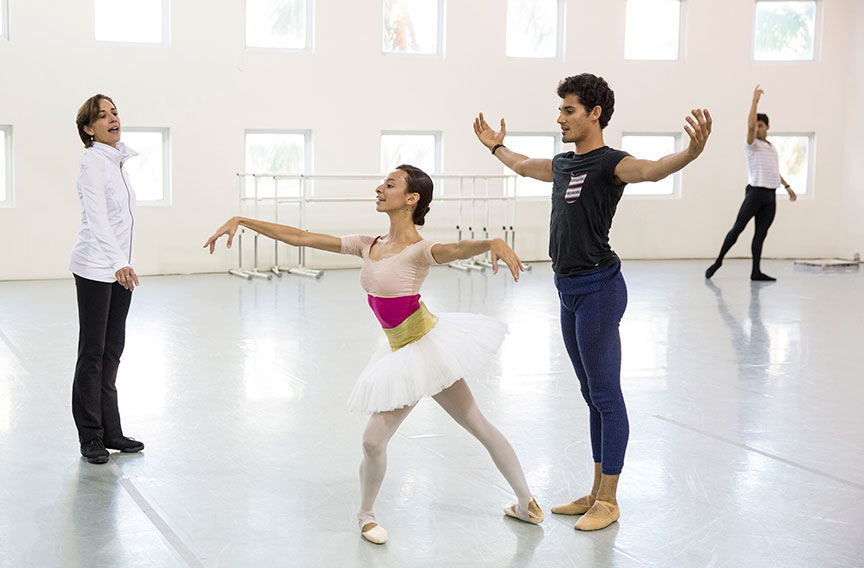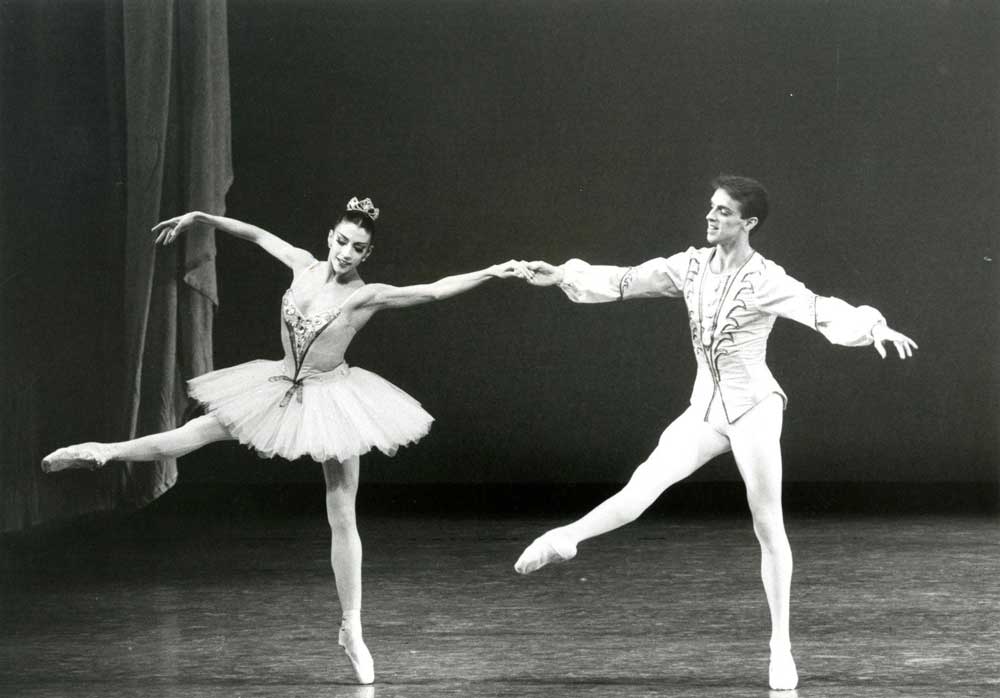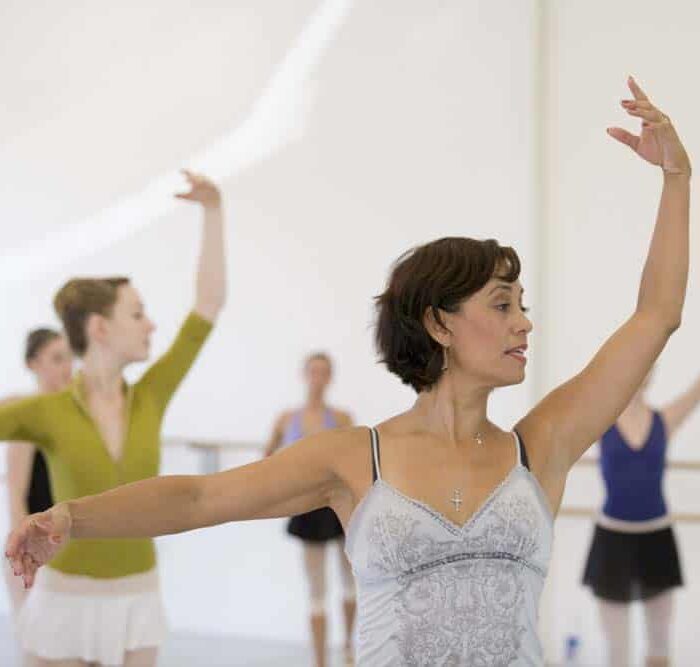Ballet’s Latine Inspirations, Part 1
Written and researched by PNB Company dancer Kyle Davis
In celebration of National Hispanic Heritage Month, we are looking at some of the incredible Latino and Latina ballet dancers who have, and continue, to deeply impact the ballet industry by breaking barriers, inspiring others through representation, and giving back to their communities. Read through and see some of the artists who have gone on to lead from the front of the studio, and visit part two of this post to read about the many Latine artists who are performing today, and some who are particularly dear to Pacific Northwest Ballet.
This impressive list of dance artists shines light on their individual accolades and career accomplishments, as well as showing where an aspiring artist might look for inspiration and Latine representation amongst the top ranked members of several notable ballet companies across the globe.
REMEMBERING THOSE WHO HAVE PASSED
Alicia Alonso is a legendary Cuban ballerina, born in Havana in 1920. Alonso began her training in Cuba, and later at the School of American Ballet, before joining Lincoln Kirstein’s Ballet Caravan. In 1940, Alicia Alonso became a founding member of Ballet Theatre – now American Ballet Theatre – where she was renowned for her portrayal of leading roles in many classical ballets, especially Giselle. During this time, George Balanchine choreographed Theme and Variations on Alonso.
Alonso went on to dance with Ballet Russe de Monte Carlo, becoming the first ballerina from the Western Hemisphere to appear as a guest artist in the Soviet Union while on tour during the Cold War. And as a dancer, Alonso continued performing into her 70’s, despite challenges from a young age with chronic vision issues related to a detached retina.
In 1948, Alonso and her husband founded Ballet Alicia Alonso in Havana, which would later be reformed as the National Ballet of Cuba, and later established the Cuban National Ballet School. Ultimately, Alonso led the National Ballet of Cuba until her death in 2019, at the age of 98, leaving a legacy of dedication to ballet and ballet training that continues to inspire today.
In 1929, Tina Ramirez was born in Caracas, Venezuela, to Mexican and Puerto Rican parents. Ramirez grew up in New York City and went on to be known as the founder and director of the leading Latino dance organization in the United States of America – Ballet Hispánico. Ramirez trained in many dance techniques, including classical ballet under the direction of Alexandra Danilova. As a performer, Ramirez was seen in international tours, Broadway productions, and the television adaptation of Man of La Mancha.
In 1970, Ramirez founded Ballet Hispánico, which included a company, a school, and educational programs. Tina Ramirez directed the company until her retirement in 2009, during which time she enlisted over 45 choreographers to create new works for the company and was instrumental in building several community arts programs and partnerships. Ramirez received honors such as the National Medal of Arts, the Dance/USA Honor Award, the Dance Magazine Award, the NYC Mayor’s Award of Honor for Arts & Culture, and an honorary degree, Doctor of Fine Arts, from Julliard. Additionally, AARP Magazine named Ramirez “a cultural trailblazer” and she was given the title of Latina of the Year by Latina Magazine in 2000. Tina Ramirez passed away in 2022, at the age of 92.
Born Guadalupe Martinez Desfassiaux Serrano in 1930, the Chilean-born ballerina was known professionally as Lupe Serrano. Lupe Serrano began her professional career at the age of 13, dancing with the Mexico City Ballet, before moving to New York City to join Ballet Russe de Monte Carlo, and then American Ballet Theatre in 1953. Serrano made history by becoming ABT’s first Hispanic American principal dancer and gained international acclaim after performances in the Soviet Union and tours across Europe and South America. In 1971, Lupe Serrano retired from the stage and began an illustrious career as a teacher.
Serrano’s long history of passing her knowledge onto the next generation began at the University of Wisconsin-Milwaukee and the College Conservatory of Milwaukee, while still performing with American Ballet Theatre. In 1971, Serrano was named Assistant Director of the National Academy of Arts in Illinois, and in 1974, she became the head of the apprentice program for Pennsylvania Ballet. Lupe Serrano held the position of School Director for Pennsylvania Ballet from 1975-1983, at which time she resigned to allow more time for guest teaching. After over 50 years of giving back through dance education, Lupe Serrano passed away in early 2023, at 92 years of age.
World-renowned ballet star, Fernando Bujones, was born in Miami, Florida in 1955, while his parents were visiting family in the United States from Cuba. Bujones’ adolescence was split between Miami and Havana, where his formal ballet training began at Alicia Alonso’s Cuban National Ballet School. Bujones was later awarded a full scholarship to train at the School of American Ballet in New York City, catching the eye of New York City Ballet director, George Balanchine. At age 19, Fernando won the Gold Medal at the International Ballet Competition in Varna, Bulgaria – a competition frequently considered a ballet dancer’s equivalent to the Olympics – making him the first American male dancer to win.
Despite being offered a position with New York City Ballet, Bujones opted for a more classical career and joined American Ballet Theatre in 1972. The following year Bujones was promoted to soloist, and in 1974, principal. Throughout his 30-year performance career, Bujones went on to perform as a guest artist with more than 60 companies, including many of the greatest – The Royal Ballet, Paris Opera Ballet, Royal Danish Ballet, Teatro alla Scala, Stuttgart Ballet, the Australian Ballet, and the National Ballet of Canada, to name a few.
In 1999, Fernando Bujones returned to Florida to become artistic director of Southern Ballet Theater, influencing the company’s name change to what it remains today – Orlando Ballet. Bujones’ fame shown a spotlight on ballet in Orlando and Southern Florida, creating a positive and lasting impact on professional ballet and ballet training in the region. Bujones sadly passed away in 2005 at the age of 50.
CURRENT ARTISTIC LEADERS
Evelyn Cisneros-Legate is the director of The Frederick Quinney Lawson Ballet West Academy in Salt Lake City, Utah. Born in Southern California, Evelyn is known as the first Mexican American principal ballerina and one of America’s finest ballerinas to date. Cisneros-Legate began her dance training under the tutelage of Phyllis Cyr and went on to study on scholarship at the School of American Ballet summer program. In 1976, Evelyn joined San Francisco Ballet as an apprentice and remained with the company for 23 years.
Despite facing discrimination as a Latina dancer, Cisneros-Legate was inspired to rise through the ranks. She not only became a principal dancer but was considered an international star and prima ballerina. During her stage career, Cisneros-Legate performed leading roles in Swan Lake, Sleeping Beauty, Romeo and Juliet, the title role of Cinderella in a television broadcast from the White House, and works by contemporary choreographers George Balanchine, Jerome Robbins, Jiri Kylian, and Mark Morris. She was also featured on the cover of Ballet News, Dance Magazine, and Hispanic Magazine.
Since retiring from performing with San Francisco Ballet in 1999, Cisneros-Legate has been a leader in dance education. Evelyn has served as an artistic consultant and ballet education coordinator for San Francisco Ballet, academy director of Ballet Pacifica, principal of Boston Ballet School’s Marblehead Studio, and artistic director of The National Dance Institute of New Mexico. Additionally, the Huffington Post named Cisneros-Legate one of the “17 Ballet Icons Who Are Changing the Face of Dance Today.” Evelyn Cisneros-Legate assumed her current position as the director of the Ballet West Academy in 2020.
Originally from Havana, Lourdes Lopez is the artistic director of Miami City Ballet. Lopez, who was raised in Miami, completed her formal ballet training on full scholarship at the School of American Ballet and joined the New York City Ballet in 1975, at age 16. Under the leadership of George Balanchine and Jerome Robbins, Lopez rose through the ranks, ultimately achieving the rank of principal dancer, and retired from the stage in 1997.
After retiring from the stage, Lopez served as a cultural arts reporter for New York’s WNBC-TV and became a full-time faculty member at Ballet Academy East. Lopez also served as a faculty member for Barnard College and made an appearance on the educational children’s television series Sesame Street. In 2002, Lourdes was named executive director of The George Balanchine Foundation, educating the public about ballet and the work of choreographer George Balanchine. Five years later, Lopez co-founded the New York-based dance company Morphoses with Christopher Wheeldon, serving as the company’s executive director. Lopez was also a co-founder of The Cuban Artists Fund which supports Cuban and Cuban American artists achieving their artistic goals.
Honors given to Lourdes Lopez to recognize her successes and contributions to dance and her community include the Jerome Robbins Award, Ballet Hispánico’s “Toda Una Vida” Lifetime Achievement Award, the International Ballet Festival of Miami’s “A Life for Dance” Lifetime Achievement Award, and an award from the American Immigration Law Foundation honoring Cuban Americans for their accomplishments and contributions to American Society. Lourdes Lopez assumed her current position as artistic director of Miami City Ballet in 2012.
Born in Cuba and raised in New York, Eduardo Vilaro is the artistic director and CEO of Ballet Hispánico. Vilaro joined Ballet Hispánico as a dancer at the invitation of Tina Ramirez, spending almost a decade with the company. In 1996, Eduardo left New York to earn a master’s degree in interdisciplinary arts at Columbia College Chicago, after which he founded and directed Chicago-based dance company Luna Negra Dance Theater to celebrate the richness of Latino culture through the creation of works by Latino choreographers. After ten years of leading his own company in Chicago, Vilaro returned to New York and to Ballet Hispánico.
As a choreographer, Vilaro uses dance to examine and explore the Latin American experience and to create conversation on what it means to be American. Having created over 40 ballets for various companies and festivals, Eduardo has also been honored with the Ruth Page Award for choreography, HOMBRE Magazine’s Arts & Culture Trailblazer of the Year, a spot in the Bronx Walk of Fame, and other awards for his leadership and contribution to the arts. Eduardo Vilaro assumed his current position as artistic director of Ballet Hispánico in 2009 and was also named chief executive officer in 2015.
Carlos Acosta is director of Birmingham Royal Ballet. Born in Havana, Cuba, Acosta is the youngest of eleven siblings. Having received his training from the Cuban National Ballet School, Carlos joined English National Ballet in 1991, after winning the Prix de Lausanne the year prior. Acosta returned to Havana to dance under the direction of Alicia Alonso at the National Ballet of Cuba before being invited to join Houston Ballet as a principal in 1993, where Carlos’ career flourished over the next five years.
In 1998, Carlos Acosta became a principal dancer with The Royal Ballet in London, changing his title to principal guest artist in 2003 to better enjoy his international career as a guest artist. Acosta retired from The Royal Ballet in 2016, with not only a jaw-dropping list of performance repertoire, but also choreographic credits on Royal Ballet productions of Don Quixote and Carmen and having also choreographed a new production of Guys and Dolls for the West End.
Carlos founded his own company in Havana, Acosta Danza, which tours the world presenting a fusion of classical, contemporary, and Cuban dance. In 2017, through the Carlos Acosta International Dance Foundation, Acosta opened a dance academy to give young dancers a free, three-year dance training program. Some of Carlos’ honors include a Princess Grace Foundation Dance Fellowship, the Benois De La Danse award, an Olivier Award for Outstanding Achievement in Dance, appointment as Commander of the Order of the British Empire (CBE), and the Queen Elizabeth II Coronation Award from the Royal Academy of Dance.
Additionally, Carlos Acosta’s career extends beyond dance. He has written two books, a work of fiction titled Pig’s Foot, and an autobiography No Way Home. Acosta has appeared on the screen in Natalie Portman’s segment of New York, I Love You, John Robert’s The Day of Flowers, Susanna White’s Our Kind of Traitor, Cynthia Newport’s Dreams of Flight, and the 2019 biopic about his life, titled Yuli. Carlos Acosta assumed his current position as director of Birmingham Royal Ballet in 2020.
Born in Cuba, Xiomara Reyes is the head of the professional training division for The Washington Ballet School. Reyes received her training from the Cuban National Ballet School, after which she joined the Royal Ballet of Flanders as a soloist. After seven years in Belgium, Xiomara joined American Ballet Theatre as a soloist in 2001 and was promoted to principal in 2003. During her stage career, Reyes performed an expansive array of classical and contemporary repertory until her retirement in 2015.
Reyes has won the gold medal for best soloist at the International Ballet Competition of Chiclayo, Peru, best couple prize at the International Ballet Competition in Varna, and has served as a judge for ballet competitions, such as Youth America Grand Prix and USA International Ballet Competition. As a passionate teacher of the next generation of artists, Reyes is a highly sought after masterclass instructor. Xiomara Reyes assumed her current position as The Washington Ballet’s Professional Training Division Head in 2016.
Born in Buenos Aires, Paloma Herrera is the artistic director of Kaatsbaan Ballet Intensive. One of Argentina’s most prominent dance figures, Herrera began her dance training in Buenos Aires at age 7, then at the Minsk Ballet School in Russia, starting at age 11. After returning to Argentina to perform at the Teatro Colón, Herrera briefly continued her studies at the School of American Ballet before joining American Ballet Theatre in 1991. In two years, Herrera was promoted to soloist, and by 1995, she had achieved the rank of principal dancer.
During Herrera’s performance career she danced an impressive list of roles, both at American Ballet Theatre and as a guest artist with companies such as New York City Ballet, Bolshoi Ballet, and National Ballet of Cuba. Paloma retired from American Ballet Theatre in 2015.
Herrera has served as a board member for The Clive and Valerie Barnes Foundation, helping award the annual Clive Barnes Award to talented young professionals in the field of dance. Herrera has also served as a member of the artists committee for the Kennedy Center Honors. In 2017, Paloma Herrera was appointed artistic director of the Ballet Estable del Teatro Colón, a position she held for five years before assuming her current position as artistic director of Kaatsbaan Ballet Intensive in 2022.
Maria Riccetto is the artistic director of Ballet Nacional de Sodre. Riccetto was born and raised in Montevideo, Uruguay, studying dance at the National School of Dance in Uruguay before finishing her training on scholarship in the United States at North Carolina School of the Arts. Maria quickly earned a contract with American Ballet Theatre, where she danced as a soloist until 2012. Riccetto returned home to dance with Ballet Nacional de Sodre until her retirement from the stage.
Riccetto is a household name in Uruguay, not only for her dancing – having won the Benois de la Danse for her performance of Tatiana in John Cranko’s Onegin – but also for her appearances on screen. Maria is a judge on the television reality talent show Got Talent Uruguay and her dancing can be seen in the film Black Swan, as the dance double for actress Mila Kunis.
In 2019, Riccetto officially retired from the stage to focus on artistic management, becoming the academic coordinator of ballet for the National School of Artistic Training of Sodre in 2020. Maria Riccetto assumed her current position as artistic director of Ballet Nacional de Sodre in 2021.
Originally from Rio de Janeiro, Thiago Soares is the artistic director of Ballet de Monterrey. Soares received his ballet training in Brazil, graduating from the Centre for Dance Rio, before joining the Rio de Janeiro Municipal Theatre Ballet in 1998. In 2002, Thiago Soares joined The Royal Ballet as a first artist, being promoted almost every subsequent year until reaching the rank of principal dancer in 2006. After an illustrious career with The Royal Ballet, Soares retired from the company in the 2019/2020 season.
In recognition of his skills as a dancer, Thiago has won medals in multiple international ballet competitions and was awarded the Critic’s Circle National Dance Award in the United Kingdom. Soares continues to perform as a guest artist around the world, while simultaneously leading Ballet de Monterrey, a position he assumed in 2021.

